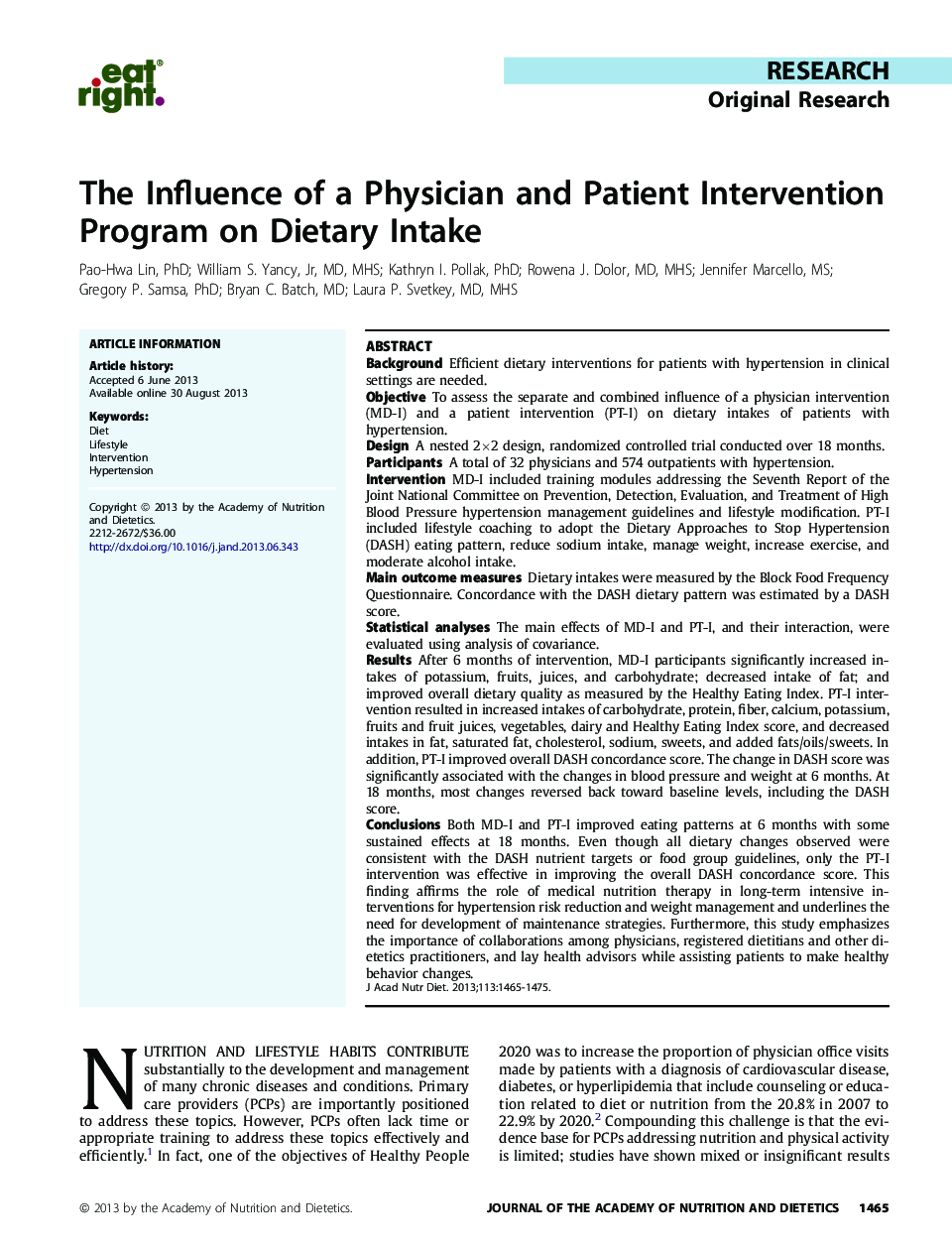| Article ID | Journal | Published Year | Pages | File Type |
|---|---|---|---|---|
| 2656838 | Journal of the Academy of Nutrition and Dietetics | 2013 | 11 Pages |
BackgroundEfficient dietary interventions for patients with hypertension in clinical settings are needed.ObjectiveTo assess the separate and combined influence of a physician intervention (MD-I) and a patient intervention (PT-I) on dietary intakes of patients with hypertension.DesignA nested 2×2 design, randomized controlled trial conducted over 18 months.ParticipantsA total of 32 physicians and 574 outpatients with hypertension.InterventionMD-I included training modules addressing the Seventh Report of the Joint National Committee on Prevention, Detection, Evaluation, and Treatment of High Blood Pressure hypertension management guidelines and lifestyle modification. PT-I included lifestyle coaching to adopt the Dietary Approaches to Stop Hypertension (DASH) eating pattern, reduce sodium intake, manage weight, increase exercise, and moderate alcohol intake.Main outcome measuresDietary intakes were measured by the Block Food Frequency Questionnaire. Concordance with the DASH dietary pattern was estimated by a DASH score.Statistical analysesThe main effects of MD-I and PT-I, and their interaction, were evaluated using analysis of covariance.ResultsAfter 6 months of intervention, MD-I participants significantly increased intakes of potassium, fruits, juices, and carbohydrate; decreased intake of fat; and improved overall dietary quality as measured by the Healthy Eating Index. PT-I intervention resulted in increased intakes of carbohydrate, protein, fiber, calcium, potassium, fruits and fruit juices, vegetables, dairy and Healthy Eating Index score, and decreased intakes in fat, saturated fat, cholesterol, sodium, sweets, and added fats/oils/sweets. In addition, PT-I improved overall DASH concordance score. The change in DASH score was significantly associated with the changes in blood pressure and weight at 6 months. At 18 months, most changes reversed back toward baseline levels, including the DASH score.ConclusionsBoth MD-I and PT-I improved eating patterns at 6 months with some sustained effects at 18 months. Even though all dietary changes observed were consistent with the DASH nutrient targets or food group guidelines, only the PT-I intervention was effective in improving the overall DASH concordance score. This finding affirms the role of medical nutrition therapy in long-term intensive interventions for hypertension risk reduction and weight management and underlines the need for development of maintenance strategies. Furthermore, this study emphasizes the importance of collaborations among physicians, registered dietitians and other dietetics practitioners, and lay health advisors while assisting patients to make healthy behavior changes.
